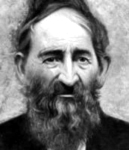Charles Cottar
The name Cottar is well known in Kenya, but who was the first Cottar to arrive? An American born in 1874 in Cedar County, Iowa, went to East Africa on an exploratory safari in 1912. This man, Charles Cottar, returned with his father in 1913 and the pair started hunting and taking films. A return to the States demonstrated that the films were popular, so much so that the Globe Theatre in New York showed the first full-length movie of African wild life in the United States. Encouraged, Charles Cottar moved his family to East Africa and set up Cottar Safaris. Physically huge, well over six feet in height, with a mane of shaggy hair and a barrel chest, he wore a ten-gallon Stetson and braces made of cut strips of car tyre inner tubing. As a former sheriff in the US corn belt, he was a crack shot with a simple approach to life. If he liked you, that was fine, but if not … and his reach was long and his knuckles hard. The fact that he always carried a cudgel did not inspire confidence in strangers. Feared by adults, he was adored by children and dogs.
At the time safaris travelled through fever-stricken areas with foot porters, donkeys or oxcarts, and Cottar suffered more than once from blackwater fever. He also nearly died from the spirilium tick fever, but his porters carried him for miles, unconscious on a stretcher, until they reached medical aid. Photographic safaris were particularly dangerous, because animals had to be enticed near the cameras and they would frequently charge. This meant they had to be killed. Cottar would snatch up his rifle at the last minute and there were several close shaves. Once he was badly wounded by a leopard when stepping backwards into a warthog hole. This was not the only time a leopard attacked him. A resulting scar twisted one of his eyes out of alignment, giving his face a fierce expression. There were also problems about obtaining film supplies from America, and to make ends meet Cottar undertook a spot of illegal ivory poaching in what was then the Belgian Congo. When the First World War ended Cottar bought ponies from the departing South African army and trained them for lassoing animals for overseas zoos.

Charles Cottar
In the 1920s Cottar and his three sons Pat, Mike and Ted (there were also six beautiful daughters who must have taken after their mother) established themselves as professional game hunters and guides. A stroke disabled Cottar and he thereafter swung out his long legs in a peculiar, though fast, gait. He leaned heavily on a stick. He also turned to prospecting, owning the Vitingini Mining Company mining galena (silver lead), which he shipped to Belgium. This came to an end by the Second World War. In 1940, in September, he and his son Pat were filming a rhino in Maasailand when the beast charged and gored Cottar. His leg artery was penetrated and Cottar bled to death. The Mombasa Timesreported: ‘[Cottar] had intended to return to the States this year, but wanted a few more pictures — in the securing of which he was one of the pioneers in East Africa. He and his son Pat went out together and became temporarily parted in dense bush. Suddenly a rhino emerged from heavy shrub and charged Mr Cottar Senior. He fired and hit the beast, but failed to drop it and, coming on, it gored him in the right thigh. He fell to the ground, but still continued firing until the magazine of his rifle was empty — and every bullet found its mark. Hearing the shot, Pat Cottar hurried to his father’s aid through about 500 yards of thick bush. He arrived to find the rhino down, but still trying to savage the elder man, and he dispatched it with a well placed shot. He then cut a path through the bush to bring the car, and erected a tarpaulin over his father after rendering first aid. The elder man, however, died after about an hour and a half. The body was brought into Nairobi and the funeral took place at the Forest [Road] Cemetery on Sunday.’
Some of the information in this blog came from Peter Ayre’s East African Biographical Database which is to be put on the internet in due course.

Recent Comments